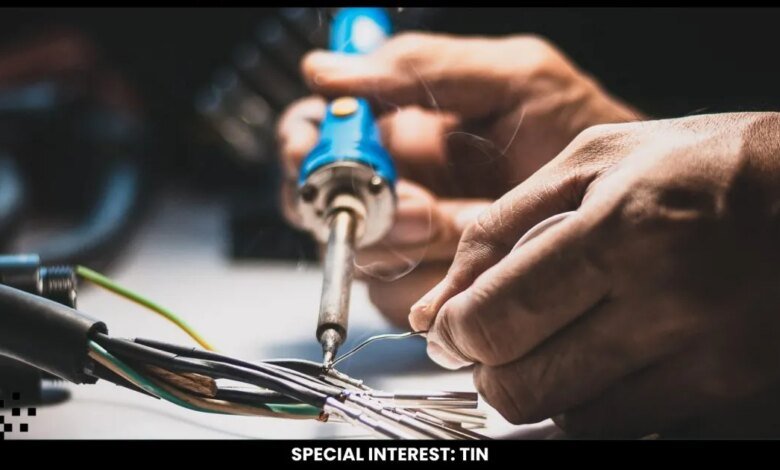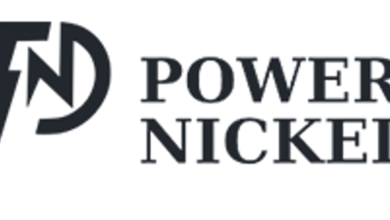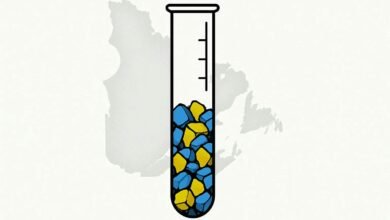Tin’s PR problem masks metal’s power

Tin is in dire need of a good marketing manager because while it is facing a severe supply shortage, it is still not attracting the same level of attention as other critical metals.
Joe David, Managing Director of Spain-focused tin explorer Elementos (ASX:ELT), says “tin still has an image problem”.
“When you say tin, people think low-value products like tin cans or tin foil, when in fact 51% of tin in 2024 went into electronic circuits, with more feeding into batteries, solar panels, 5G and data centres,” he tells Mining.com.au.
“You would be hard pressed to find a metal or mineral more exposed to high-tech applications.”
Graham Carman, CEO of Peru-focused zinc and tin explorer Tinka Resources (TSX-V:TK), says tin does not receive as much attention as other metals such as copper or lithium, largely because it is a smaller market and less directly tied to the high-profile trends in electric vehicle and battery storage markets.
“That doesn’t make it less important. Tin is one of the 50 critical minerals listed by the US Department of Energy (2023), and the tin market is large enough to be traded on the London Metal Exchange (LME),” he tells this news service.
“Tin is the highest value of all the base metals trading around US$33,000 ($50,647) per tonne.”
Tin is traditionally used as a solder, and the more technologically advanced products get, the more soldering is needed due to the increase in circuits used.
This means high demand is going to flow through from renewable energy technologies, semiconductors, artificial intelligence, data centres and electric vehicles.
Although over 50% of the tin produced currently is used in solder, estimates suggest around 30% of demand is expected to come from electric vehicles – which require three times more tin than an internal combustion engine vehicle.
But while demand continues to rise, supply appears to have stalled which is expected to lead to a sustained deficit for the foreseeable future.

Tin prices climb on chronic deficit
Since the end of October in 2022, the LME tin price has more than doubled from around US$17,500 a tonne to nearly US$38,000 a tonne in early April this year.
Although it witnessed a sharp dip shortly after hitting its 2025 peak, the price is back on an upwards trajectory and has jumped roughly 87% in the past two and a half years.
David says the tin tailwinds are all based on global supply challenges.
“The tin market remains extremely supply constrained, with few tin mines in operation, that a minor supply disruption has a major impact on price,” he says.
“Tin mines are mostly located in developing regions around the world and as such continue to experience irregular disruptions leading to upward price pressures.”
Supply disruptions this year resulted from armed conflict in the Eastern Democratic Republic of the Congo, mining bans and earthquakes in Myanmar and gas explosions in Malaysia.
“Last year it was corruption investigations and increased regulation in Indonesia. In 2023 it was civil unrest in Peru and bankruptcy of a smelter in Bolivia,” David explains.
“The only reliable fact in the current tin industry is that supply will continue to be disrupted and prices will continue to be supported upwards.”
“The only reliable fact in the current tin industry is that supply will continue to be disrupted and prices will continue to be supported upwards”
Carman, meanwhile, expects the supply-demand dynamics for tin to strengthen in the medium to long term.
“There is no substitute for tin as solder, and there are fewer mines being developed while many old mines are producing less,” he tells Mining.com.au.
“With strong demand continuing in both industrial and green energy applications, we anticipate a tight market for the foreseeable future and tin prices to move higher overall.”
Historically tin was able to be mined cheaply and easily out of rivers in south-east Asia and Africa.
David notes that artisanal sources of tin kept the supply and demand forces balanced for a hundred years, but these supplies have dried up and hard rock mining is what is now required to supply the tin industry.
“Following the global tin price crash in 1986, most global mining companies shut down or went bankrupt – with most of the producers who remained being state-owned or vertically integrated suppliers in cheap labour regions of China, Malaysia and South America,” David explains.
“This led to almost no tin mining assets being open to global share market and commodity investors, and therefore tin was pretty much forgotten for 20-30 years.
“Even now, across global share markets there are only three to four dedicated tin producers who you can invest in, and only one on the ASX.”
Producers in short supply
Metals X (ASX:MLX) is the only ASX-listed company that solely produces tin through its 50% stake in the Renison Tin Operation in Tasmania, which the company says is the largest tin producer in Australia and one of the world’s largest and highest grade tin mines.
Just last month, Metals X increased its stake in Elementos to 19.98% with a further $5 million investment.
Executive director Brett Smith said following the news that the strategic investment in Elementos provided Metals X with the further opportunity to participate in a global pipeline of developing tin projects, bringing the company’s operational intellectual property to assist in their development.
Just prior to Metals X raising its stake, Elementos released the Definitive Feasibility Study for its Oropesa Tin Project in Spain which envisages a 1.4 million-tonne-per-year open-cut mining operation producing an average 3,405 tonnes of contained tin per year, as tin ingot, for the European market.
Oropesa has an estimated 12-year mine life with an all-in sustaining cost of US$15,000 per tonne.
Based on the LME reference tin price of US$30,000 per tonne over the life-of-mine, the DFS confirms a pre-tax net present value (NPV) of $270 million and an internal rate of return (IRR) of 26% with a payback period of 2.7 years.
“We have not only delivered our Definitive Feasibility Study for the Oropesa Tin Project in Spain – the only tin project in development in the European Union – we have submitted our key licence applications with the Andalucian government, we have signed an industrial testwork partnership with Freeport-McMoran, and are drilling a very exciting shallow target down at our Cleveland Project in Tasmania,” David says.
The next steps for the company include securing permit approvals and progressing key partnerships through to a final investment decision and construction.
With Oropesa being the only tin mine in development in the European Union, the project has attracted increased interest from potential customers, debt providers and investors.
“We continue to make significant progress with qualified parties who are likely to play a critical role in metal offtake agreements, debt financing and equity contribution,” David says.
Meanwhile, although Vancouver-based Tinka’s primary commodity focus is zinc, the company’s flagship Ayawilca Project in Peru also hosts one of the largest undeveloped tin resources in the Americas, totally separate to the zinc resource, according to Carman.


The Ayawilca Project resource currently sits at 1.4 million tonnes @ 0.72% tin in the higher confidence indicated category and 12.7 million tonnes @ 0.76% tin in the inferred category, and is open down-structure.
“While zinc remains the primary commodity at Ayawilca (3 million tonnes zinc in resources), the potential for significant tin production at Ayawilca creates significant upside,” Carman notes.
“The 2024 Preliminary Economic Assessment (PEA) demonstrated the economic potential of the combined zinc (silver-lead) and tin project, and with ongoing exploration, we are optimistic that the tin resource at Ayawilca will continue to grow.”
The PEA factored in a dedicated tin plant that would enable 15 years of tin production at 300,000 tonnes per annum in addition to the 2 million tonnes per annum of zinc, silver and lead production over a total 21-year life.
The combined operation would have a post-tax NPV of US$434 million, using an 8% discount, and an IRR of 25.9%.
“We believe in the future that Ayawilca will be a significant tin producer,” Carman says.
Write to Angela East at Mining.com.au
Images: iStock
Credit: Source link






